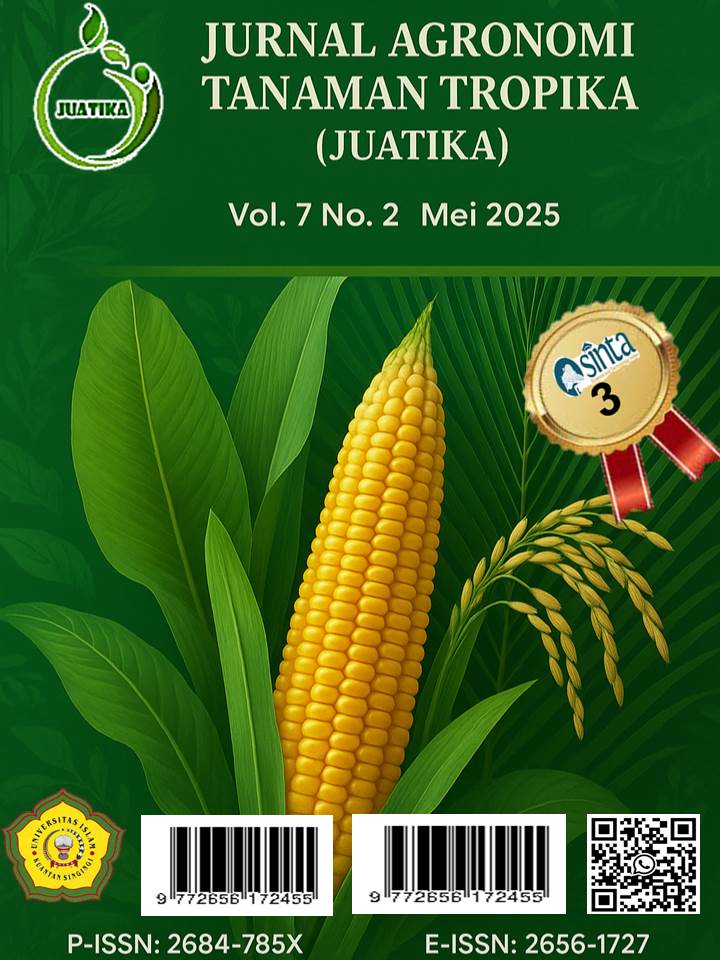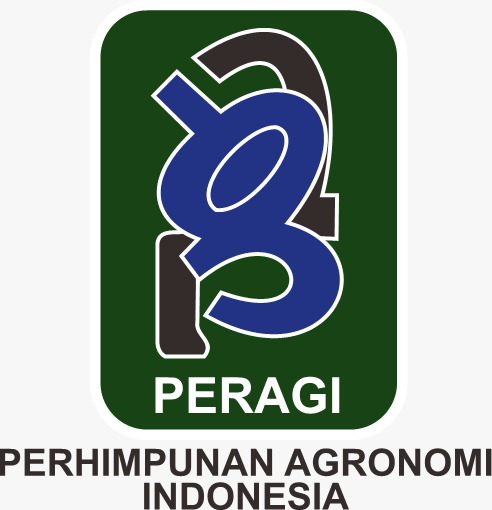Improving the Quality and Content of Sweet Potato (Ipomoea batatas L.) by Adding Chlorine
Abstract
Sweet potato (Ipomoea batatas L.) is a food commodity with significant potential as an alternative source of carbohydrates. However, damage caused by microbial contamination and quality degradation during storage remains a significant challenge. This study aimed to evaluate the effect of chlorine treatment on sweet potato quality. Chlorine treatment was performed by soaking sweet potatoes in a sodium hypochlorite (NaOCl) solution at a specified concentration for a set duration. Parameters assessed included microbial contamination levels, changes in skin and flesh color, water content, and shelf life. The results demonstrated that chlorine treatment significantly reduced surface microbial populations and slowed the rate of physiological deterioration during storage. Furthermore, chlorination did not adversely affect the physical appearance or organoleptic qualities of the sweet potatoes. Therefore, chlorine treatment can be an effective method for handling sweet potatoes, extending their shelf life and maintaining product quality.
Downloads
References
Alam, M. K., et al. (2016). Comparison of the proximate composition, total carotenoids, and total polyphenol content of nine orange-fleshed Ipomoea batatas varieties grown in Bangladesh. Foods.
Amagloh, F. C., Yada, B., Tumuhimbise, G. A., Amagloh, F. K., & Kaaya, A. N. (2021). The potential of sweet potato (Ipomoea batatas) as a functional food in Sub-Saharan Africa and its implications for health: A review. Molecules (Basel, Switzerland), 26(10), 2971. https://doi.org/10.3390/molecules26102971
Antoine, J. M. R., et al. (2017). Assessment of the potential health risks associated with the aluminium, arsenic, cadmium, and lead content in selected fruits and vegetables grown in Jamaica. Toxicology Reports.
Carballo Pérez, I., Mu, T. H., Zhang, M., & Ji, L. L. (2018). Pengaruh tekanan hidrostatik tinggi pada tepung ubi jalar terhadap sifat dan karakteristik adonan roti gandum-ubi jalar. International Journal of Food Science and Technology, 53(4), 1087–1094. https://doi.org/10.1111/ijfs.13687
Pincus, L. (2016). On-farm trial assessing combined organic and mineral fertilizer amendments on vegetable yields in central Uganda. Agriculture, Ecosystems & Environment.
Moreno-Jiménez, E., et al. (2016). Availability and transfer to grain of As, Cd, Cu, Ni, Pb, and Zn in a barley agri-system: Impact of biochar, organic, and mineral fertilizers. Agriculture, Ecosystems & Environment.
Niu, S., Li, X. Q., Tang, R., Zhang, G., Li, X., Cui, B., & Haroon, M. (2019). Ukuran granula pati dan degradasi pada ubi jalar selama penyimpanan. Postharvest Biology and Technology, 150, 137–147. https://doi.org/10.1016/j.postharvbio.2019.01.004
Novita, A., Siregar, L. A. M., Rosmayati, & Rahmawati, N. (2024). Growth and essential oil production of Vetiveria zizanioides under salinity conditions with salicylic acid and mycorrhiza application. Asian Journal of Plant Sciences, 23(2), 290–303.
Novita, A., Siregar, L. A. M., Rosmayati, & Rahmawati, N. (2024). Growth in the various ecotypes of Vetiveria zizanioides at different salinity levels. E3S Web of Conferences, 595, 04001.
Trancoso-Reyes, N., Ochoa-Martínez, L. A., Bello-Pérez, L. A., Morales-Castro, J., Estévez-Santiago, R., & Olmedilla-Alonso, B. (2016). Pengaruh pra-perlakuan terhadap sifat fisikokimia dan struktural, serta bioaksesibilitas β-karoten dalam tepung ubi jalar. Food Chemistry, 200, 199–205. https://doi.org/10.1016/j.foodchem.2016.01.047
El Sheikha, A. F., & Ray, R. C. (2017). Dampak potensial bioproses ubi jalar: Tinjauan. Critical Reviews in Food Science and Nutrition, 57(3), 455–471. https://doi.org/10.1080/10408398.2014.960909
Somani, S. B., Ingole, N. W., & Kulkarni, N. S. (2011). Disinfection of water by using sodium chloride (NaCl) and sodium hypochlorite (NaOCl).
Wang, W. (2019). Amendment with industrial and agricultural wastes reduces surface-water nutrient loss and storage of dissolved greenhouse gases in a subtropical paddy field. Agriculture, Ecosystems & Environment.
Wang, S., et al. (2016). Chemical constituents and health effects of sweet potato (Ipomoea batatas). Food Research International.
Wei, J. X., et al. (2019). Levels of eight heavy metals and health risk assessment considering food consumption by China's residents based on the 5th China total diet study. Science of the Total Environment.
Copyright (c) 2025 Emir Rasyid Annaufal, Aisar Novita, Mohammad Shahid B Shahrun

This work is licensed under a Creative Commons Attribution 4.0 International License.
Authors who publish with Jurnal Agronomi Tanaman Tropika (JUATIKA) agree to the following terms:
Authors retain copyright and grant the Jurnal Agronomi Tanaman Tropika (JUATIKA) right of first publication with the work simultaneously licensed under a Creative Commons Attribution License (CC BY 4.0) that allows others to share (copy and redistribute the material in any medium or format) and adapt (remix, transform, and build upon the material for any purpose, even commercially) with an acknowledgment of the work's authorship and initial publication in Jurnal Agronomi Tanaman Tropika (JUATIKA).
Authors are able to enter into separate, additional contractual arrangements for the non-exclusive distribution of the journal's published version of the work (e.g., post it to an institutional repository or publish it in a book), with an acknowledgment of its initial publication in Jurnal Agronomi Tanaman Tropika (JUATIKA). Authors are permitted and encouraged to post their work online (e.g., in institutional repositories or on their website) prior to and during the submission process, as it can lead to productive exchanges, as well as earlier and greater citation of published work.







 More Information
More Information



